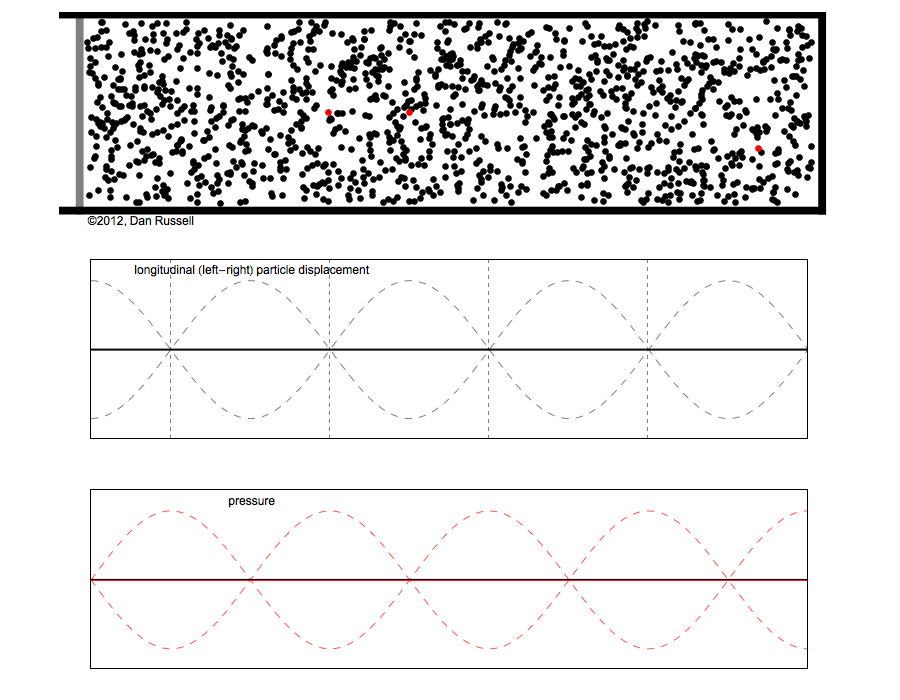The Science of SOUND & Resonance

Resonance describes the phenomenon of how standing waves increase in amplitude when the frequency of a periodically applied force (or a Fourier component of it) is equal or close to a natural frequency of the system upon which it acts.
When an oscillating force is applied at a resonant frequency of a dynamical system, the system will oscillate at a higher amplitude than when the same force is applied at other, non-resonant frequencies.

Frequencies at which the response amplitude is at a relative maximum are also known as resonant frequencies or resonance frequencies of the system. Small periodic forces that are near a resonant frequency of the system have the ability to produce large amplitude oscillations in the system due to the storage of vibrational energy.
Resonance phenomena occur with all types of vibrations or waves: there is mechanical resonance, acoustic resonance,
electromagnetic resonance, nuclear magnetic resonance (NMR), electron spin resonance (ESR) and resonance of quantum wave functions. The Sonosphere deals primarily with mechanical and acoustic resonance.
Sympathetic Vibration
Acoustic resonance is a branch of mechanical resonance that is concerned with the mechanical vibrations across the frequency range of human hearing, in other words- sound. For humans, hearing is normally limited to frequencies between about 20 Hz and 20,000 Hz (20 kHz)
Many objects and materials act as resonators with resonant frequencies within this range, and when struck vibrate mechanically, pushing on the surrounding air to create sound waves. This is the source of many percussive sounds we hear.

Acoustic resonance is an important consideration for instrument builders, as most acoustic instruments use resonators, such as the strings and body of a violin, the length of tube in a flute, and the shape of, and tension on, a drum membrane.
The particular example of a standing wave that we want to illustrate is a standing sound wave in a pipe that is forced (by a moving piston or loudspeaker) at the left end and closed at the right end. The piston at the left end of the tube oscillates back and forth at a frequency equal to the ninth harmonic of the fundamental frequency of this "quarter-wavelength resonator."
In the Sonosphere system, we are setting up standing waves in the body such that the cells of the body are vibrating around the body skeleton which is like vibrating air molecules in a tube. The notion is to try and vibrate the body's cells between the outer layer of the skin and the inner core of bone.
TRAVELING WAVES
Unlike waves on a lake, sound waves don't travel up and down. Instead they're more like layers of high and low pressure traveling outward in all directions. Each wave consists of a layer of high pressure followed by a layer of low pressure. The bigger the difference between the high pressure and the low pressure, the louder the sound.
But sound waves don't just travel in air: they travel through whatever they encounter, including your body. So when you listen to loud music your whole body alternates between high and low pressure just like the air around it.
High & Low Pitch
The reason high and low pitches feel different has to do with the length or thickness of the wave. High pitch sounds produce thousands very short waves maybe eight to ten inches thick each second. A very low note might generate only about 65 waves per second, but they could be nearly seventeen feet thick.
That difference affects the way you feel the music because with a low note, your body spends a relatively long time actually inside the layers of low and high pressure. The waves of a high note travel through your body as well, but they oscillate
so quickly between high pressure and low pressure that on the average you don't feel any real pressure change.
So next time you're at a concert and you feel those low notes going through you, remember that you are a part of the
music.







